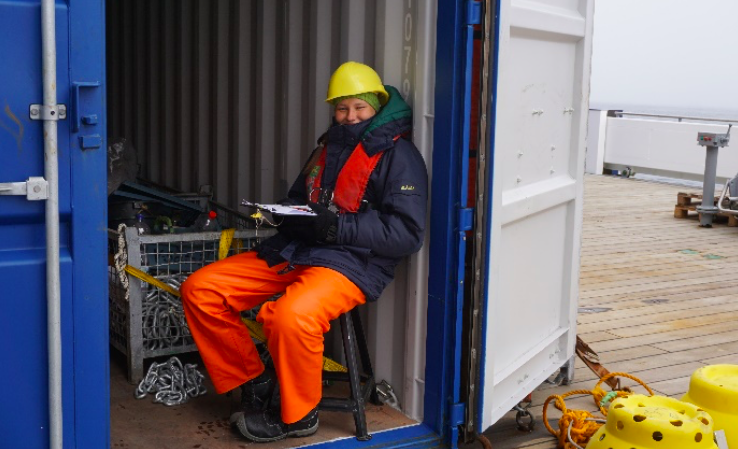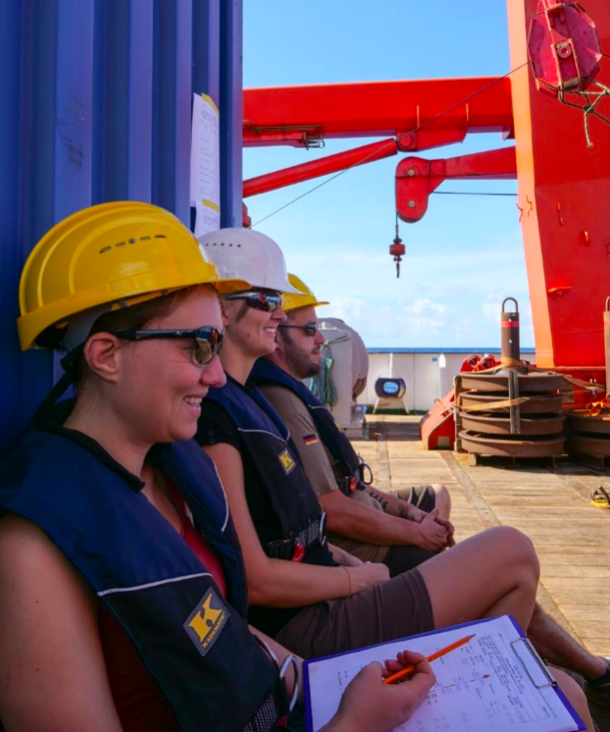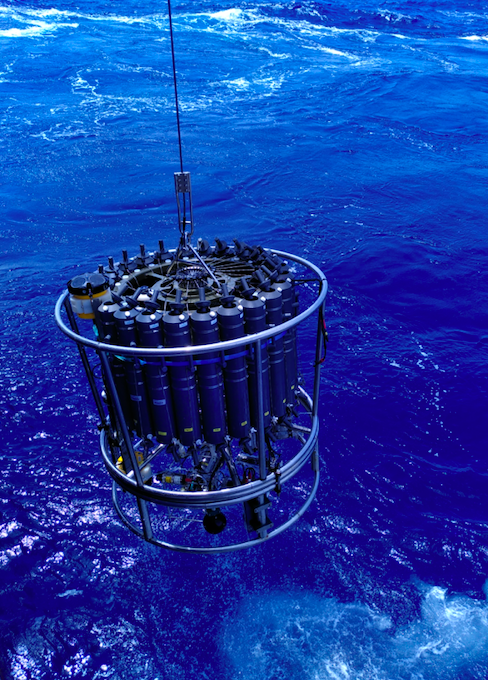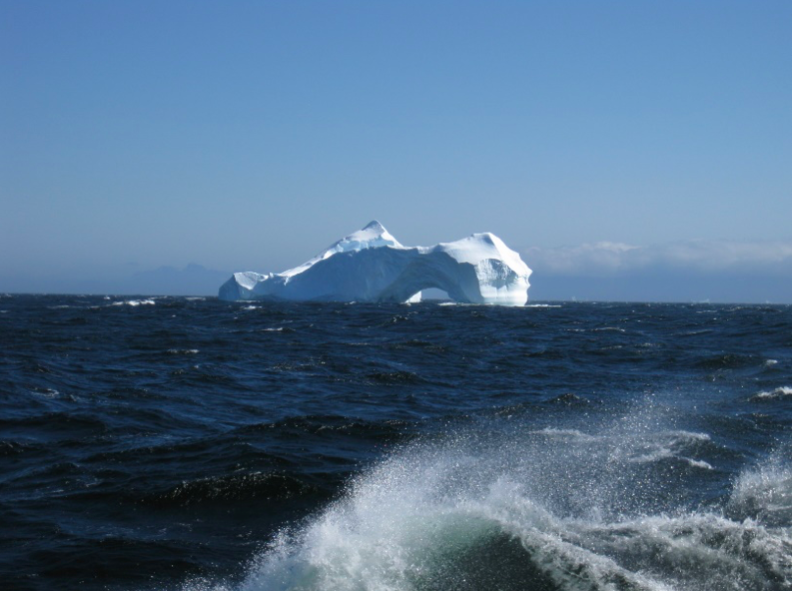Being on a research cruise in the tropical Atlantic and Labrador Sea has more similarities than you might think. First of all, we take measurements of the same current, the so-called “Deep Western Boundary Current”. This current originates in the Labrador Sea and transports cold waters from the north all the way to Brazil. It is an essential part of the ocean conveyor belt that brings heat from the tropics to colder regions.
The moorings that we recover and deploy to measure this current have exactly the same instruments, but the work on deck is still different. In the tropics, it’s a little easier as the sea is often calm, and the ship is moving just a little bit. Instead of 4 layers of clothes, you just have to make sure that you put enough sunscreen on. But there is one container on the aft of our ship that is very important in both regions as you can hide inside the container if it’s cold and windy, or just sit in its shade if the sun is burning.


Photo by Martin Visbeck
Getting wet while cleaning the recovered instruments is a welcoming refreshment in the tropics, but the early sunset can be a problem if deploying a mooring takes too long. In the beginning, our clocks had the same time zone as Recife in Brazil meaning that the sunset was around 5pm and it was completely dark soon after. This was different in the Labrador Sea in May where we could work on deck even after dinner.
A long day of mooring work definitely ends different: Either in the pool that we have on deck to get rid of the sunscreen or in the sauna to warm up again. But if you ask me which region I prefer, I would pin that down to the things I find most fascinating in the region. In the open ocean of the tropical Atlantic the water has an amazing blue colour that I never saw before and that I enjoy looking at every single day of the cruise. In the northern part of the Labrador Sea, close to Greenland, we saw a lot of ice bergs and it never got boring looking at them as every iceberg looks completely different: sometimes white, other times light blue, some are flat, others have spikes and one even had a hole. So the winner for me is the Labrador Sea although the work is sometimes harder and having cold feet most of the time is part of it.

Photo by Luisa Sarmiento
Written by Christina Schmidt, GEOMAR 2019
